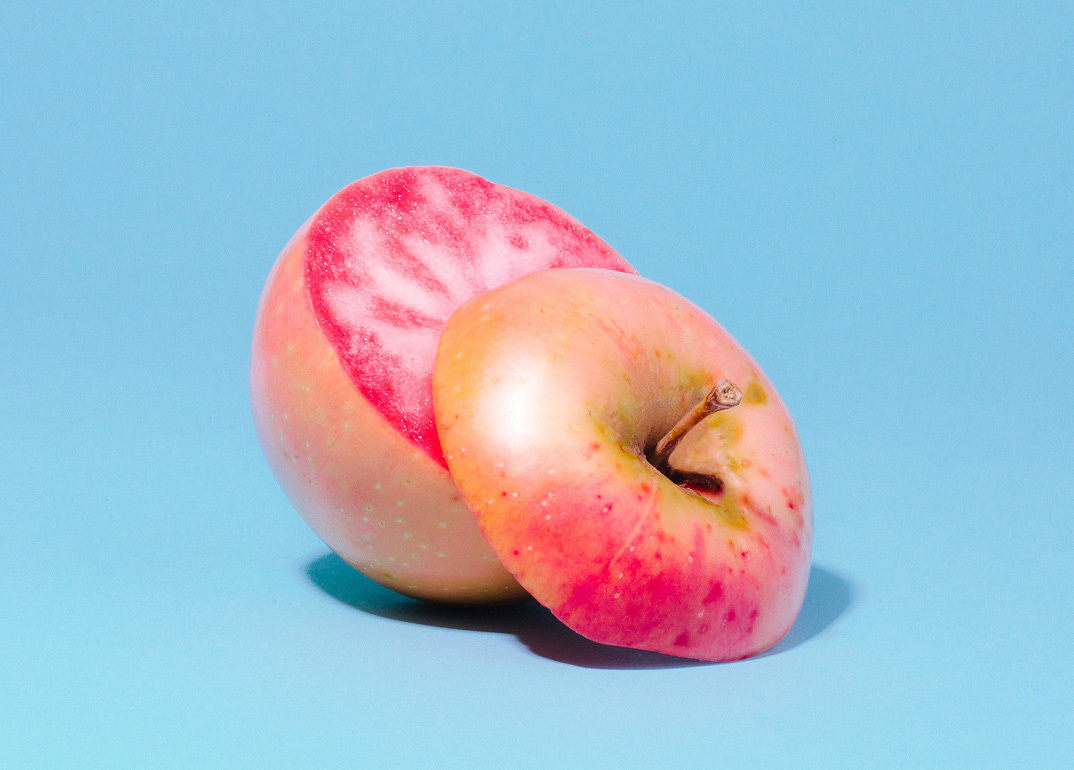
The Pink Pearl apple, seen from the top. Photo courtesy of William Mullan.
In early 2020, inside a bright Brooklyn gallery that is plastered in photographs of apples, William Mullan is being besieged with questions.
A writer is researching apples for his novel set in post-World War II New York. An employee of a fruit-delivery company, who covetously eyes the round table on which Mullan has artfully arranged apples, asks where to buy his artwork.
But these aren’t your Granny Smith’s apples. A handful of Knobbed Russets slumping on the table resemble rotting masses. Despite their brown, wrinkly folds, they’re ripe, with clean white interiors. Another, the small Roberts Crab, when sliced by Mullan through the middle to show its vermillion flesh, looks less like an apple than a Bing cherry. The entire lineup consists of apples assembled by Mullan, who, by publishing his fruit photographs in a book and on Instagram, is putting the glorious diversity of apples in the limelight.

The Knobbed Russet has a rough exterior, with creamy insides. Photo courtesy of William Mullan.
Mullan, whose day job is as a brand manager for Raaka Chocolate, can rhapsodize about apples at length. He notes that the api etoile, an apple of Swiss or French origin that grows into a rounded star shape, is hard to find, with the trees he’s seen bearing fruit little and lately. He likens them to Pokémon. “You’re really lucky if you catch it,” he says with a laugh.

The glorious api etoile is named for its resemblance to a star. Photo courtesy of William Mullan.
But he quickly sobers. “It’s a shame because they’re really cute, they’re really delicious.” Due to the demands of industrial farming, only a handful of apple varieties make it to stores, and even of those, only the most uniform specimens sit on the shelves. Growers have abandoned many delicious or beautiful varieties that have delicate skin, lower-yield trees, or greater susceptibility to disease.
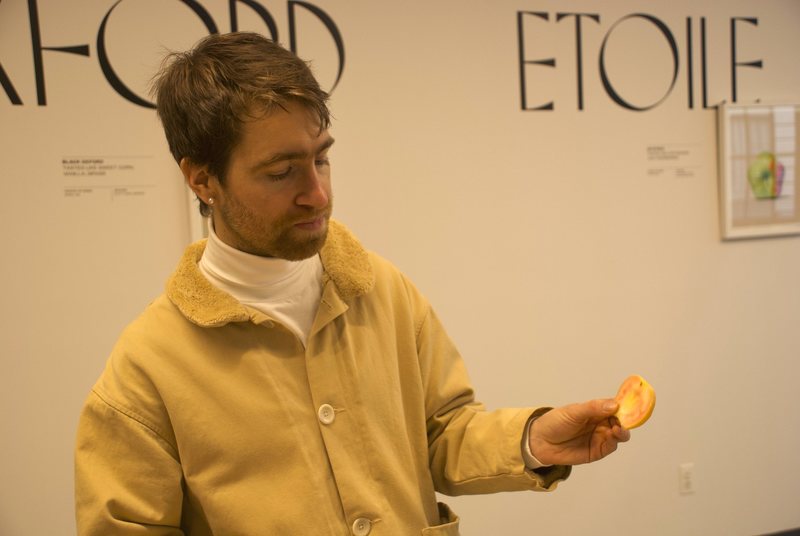
Mullan gazes at the interior of a red-fleshed apple. Photo by Anne Ewbank for Gastro Obscura.
Mullan was born in the United States, but grew up in the United Kingdom, where a teenage encounter with an Egremont Russet led to his love of apples. Its spicy, persimmon-like flavor “just blew my mind,” he says. But many of the apples he’s photographed were born in North America, including such romantic cultivars as the Black Oxford and Hidden Rose.
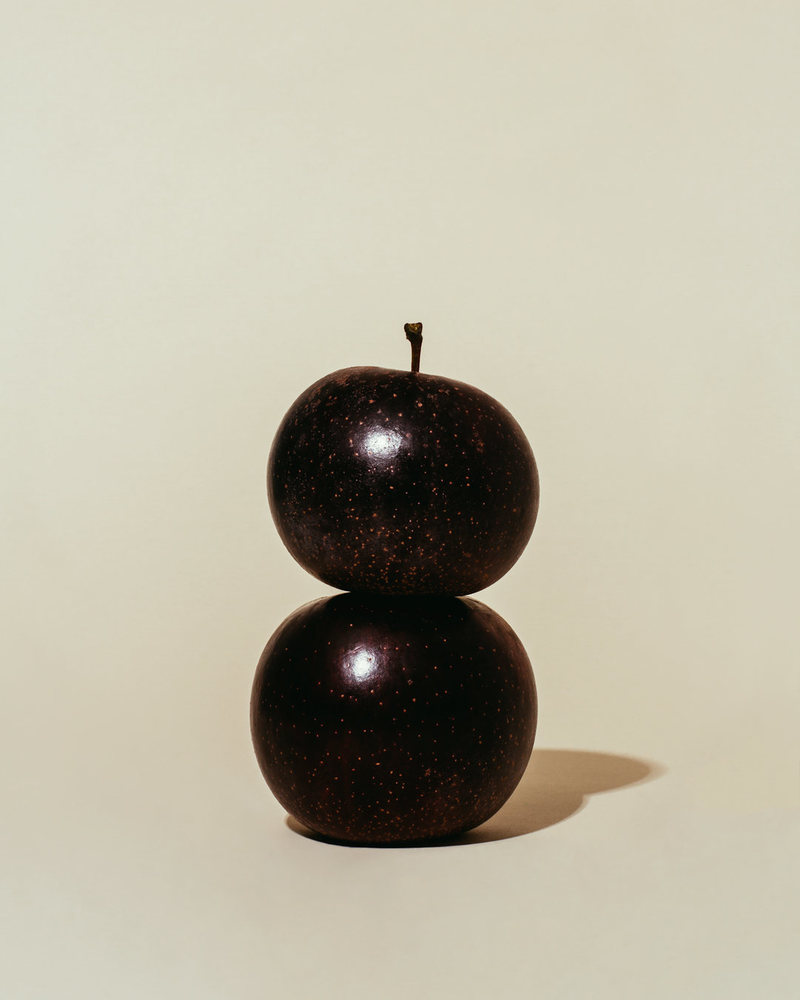
Deep red, almost black, the Black Oxford hails from Maine. Photo courtesy of William Mullan.
When health issues forced Mullan to change his diet, he satisfied his sweet tooth on apples, using the internet to research different varieties. After moving to Southern California, Mullan entered a period of what he dryly calls “apple famine.” Only when a nearby store started carrying Pink Pearl apples from Oregon was Mullan’s obsession rekindled. In his gallery, Mullan, who is wearing pearl earrings, gestures to a photograph of the Pink Pearl, which, with its translucent white skin and shell-pink interior, is almost painfully beautiful. The Pink Pearl, he explains, was bred in the 1940s by Californian Albert Etter from a red-fleshed British apple called “Surprise.”
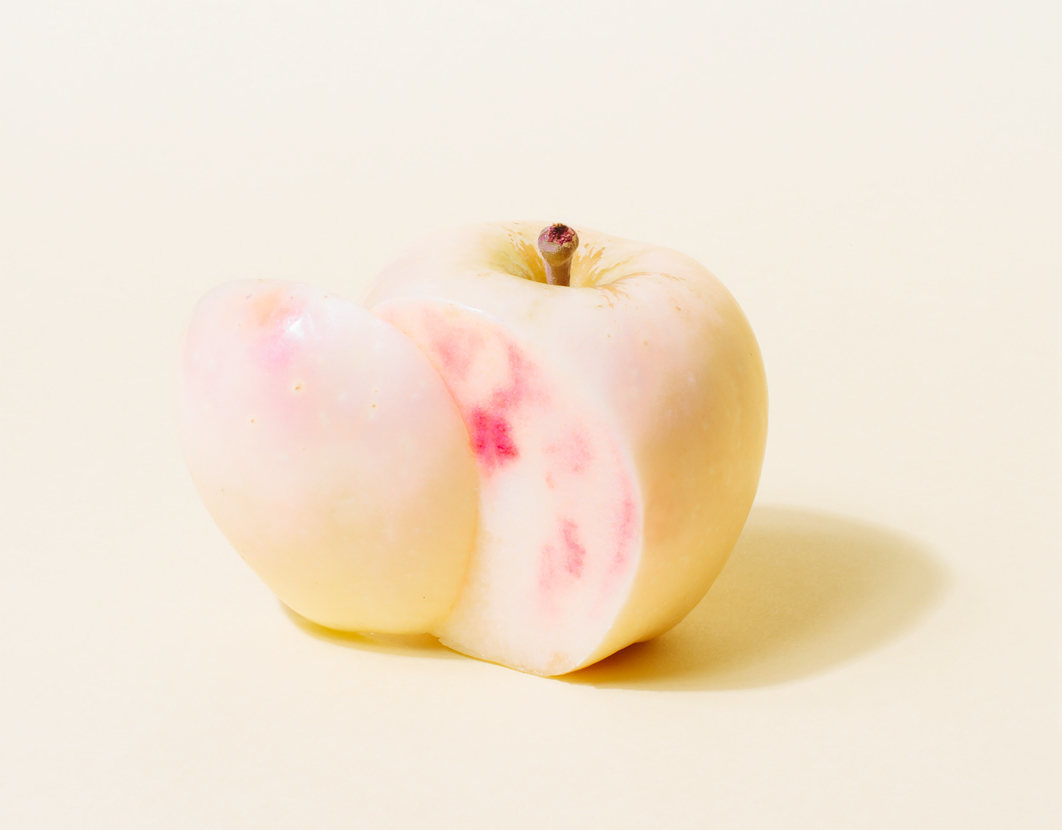
The Pink Pearl’s name explains itself. Photo courtesy of William Mullan.
After moving to New York and wielding a camera professionally, Mullan started seeking out and photographing apples from local markets, highlighting their unique colors and shapes. Apples are a popular crop in the Northeast, but there are more than 7,000 known varieties of apples in the world, which is an astonishing amount of diversity.

The Malus Sieversii PI 596280 is nameless but ghoulish. Photo courtesy of William Mullan.
Mullan’s search for rare apples has even led him to photograph varieties with no name. After an article about Mullan’s book was published in the New York Times last year, he was invited to Geneva, New York, to visit the USDA’s apple-research orchard. There, he picked up some craggy Malus Sieversii PI 596280 apples from Uzbekistan. Another tiny green specimen Mullan shows me is christened “Bean,” after the astronaut Alan Bean, who took its seeds around the moon. Mullan has a soft spot for Bean, especially since the USDA website describes it as small, [acidic], and “worthless.”
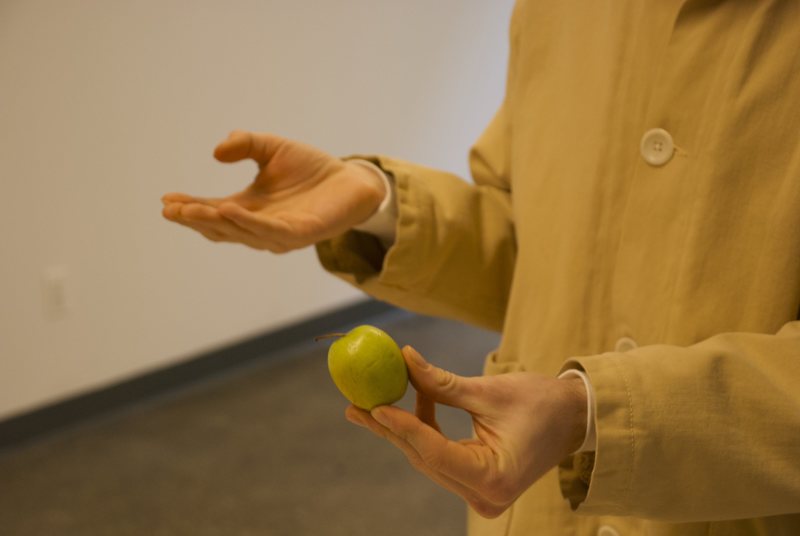
Mullan holds the humble Bean apple, which the USDA has described as “worthless.” Photo by Anne Ewbank for Gastro Obscura.
With such a unique subject, it’s perhaps no surprise that the 200 copies of Mullan’s Odd Apples, a book produced with designer Andrea A. Trabucco-Campos, has sold out. While he’s still selling prints, another book is in the works. “There’s just this sense of infinity with [apples] thatIlove,” Mullan says. While he imagines he’ll move on to other subjects in the future, for now, he’s still entranced by apples.
Soon, he’s slicing into a Knobbed Russet apple, offering me a creamy, tannic slice. It’s a little soft, but after weeks on display, that’s to be expected. Without any Photoshop, a photo of a Knobbed Russet gleams gold on the wall, preserved for much longer.
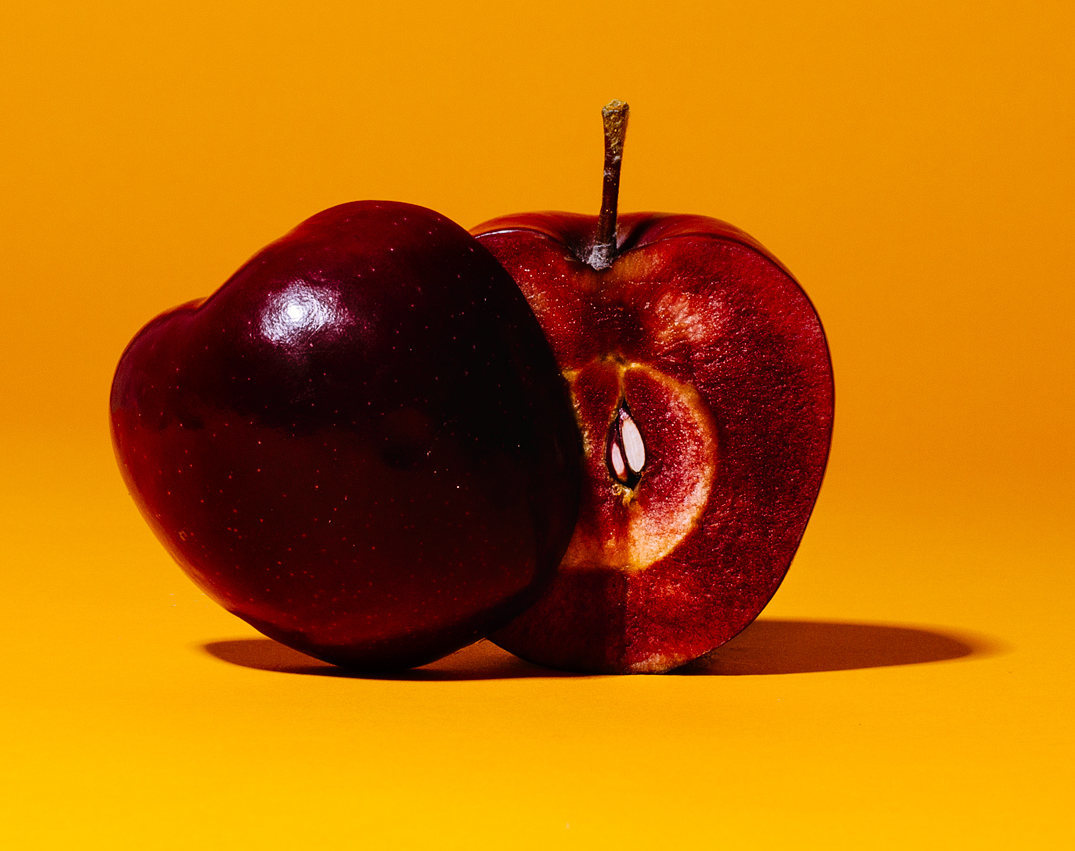
The deep, dark inside of an Otterson apple. Photo courtesy of William Mullan.
Anne Ewbank is Gastro Obscura's Associate Editor.